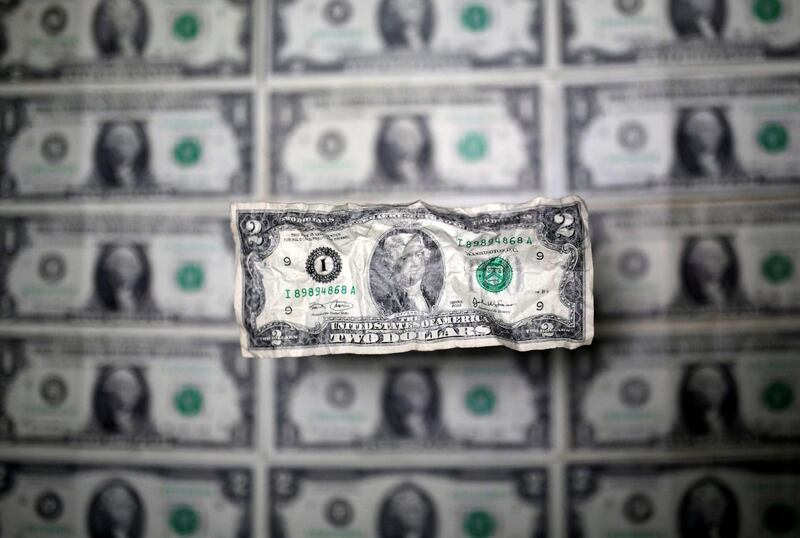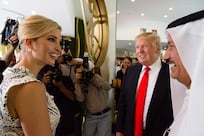US dollar strength continued through the end of April and the beginning of May as the Dollar Index moved above 92.50 levels at the time of writing.
At more than 19-week highs, the greenback has gained 3.93 per cent since April 17, a period in which the Index has closed lower only on three occasions.
Even the recently released Federal Open Market Committee minutes or the monthly US jobs report, both of which could be perceived to be dollar bearish, could do little to hinder the recent dollar rally.
Starting with the former, the Fed - in its most recent rate decision meeting - held rates unchanged at 1.75 per cent as largely expected, however, it was their dovish tone with regards to inflation that led to slight dollar weakness.
This was followed by last Friday’s US nonfarm payrolls report which came in far weaker than expected at 164,000 (versus the 189,000 expected) while average hourly earnings also slowed to 3.1 per cent (versus an expected 0.2 per cent / 0.2 per cent previous).
The dollar shrugged off the lacklustre release and continued to rally to its current five-month highs, and the greenback has now covered more than 74 per cent of the selloff since December.
_______
Read more:
US dollar strengthens as geopolitical risks ease
Optimism returns to the markets but volatility is far from over
US dollar weighed down by trade and interest rate policies
_______
Despite the recent rally, markets remain heavily short in the face of the dollar, which continues to be propped up by strong treasury yields. While a short strategy is risky in the near term, the earliest we could see some relief for dollar shorts would be around the time of the next Fed rate decision in June, when they are expected to kick off their next round of hikes.
Leading up to then, watch out for resistance to fall to 93.15 levels, a breakout of which could expose 95 levels in the summer months.
The euro continued to be bludgeoned and finds itself 3.5 per cent lower against the dollar since the middle of April. My downside target of 1.2050 levels given on April 24 was easily filled on May 1 and this slide is expected to continue.
Fundamentally, the most recent European Central Bank meeting took the wind out of Euro longs when they remained open to extending additional quantitative easing measures. Technically, the picture does not bode well with the euro snapping through the key 200-day exponential moving average. Expect weakness to continue in the euro, with the Dubai Gold & Commodities Exchange EUR/USD contract to test 1.1800 levels this month. Timing is key in this case – selling on any upward spikes may prove ultimate value heading into the summer months.
Gold remains volatile – the precious metal broke through our 1308 levels to make a low of 1301 levels on the back of a strong dollar. However, if long positions were executed at my aforementioned levels at 1308 given on April 24, we would look to hold these long positions until the channel of 1324-1331 is achieved.
Looking at the economic calendar for this month, key releases to keep an eye out for include the Reserve Bank of New Zealand and the Bank of England's rate decisions both due out on May 10 (expected unchanged at 1.75 per cent and 0.5 per cent respectively) along with the first quarter UK GDP reading due out on May 25.
However, the key development will be the Saturday deadline for President Trump to officially withdraw from the Iran nuclear deal. This development gained a lot of momentum towards the end of last week when key White House officials hinted that Trump was close to pulling out of the deal, however it is unclear how and what terms the US would exit the existing accord. Technically, Mr Trump must decide by May 12 to either renew or suspend the current waivers of the US sanctions on Iran.However after tweeting late on Monday, the President could make an announcement earlier than the aforementioned deadline.
Expect market volatility to spike in the days leading up to this historic decision, and watch the price of crude oil. DGCX’s West Texas Intermediary crude contract has been on an absolute tear since February, a period in which it has gained more than 14 per cent. An unfavourable exit from this deal would see further upsides in crude towards the channel between 75-80 in the summer months. Alternatively, if Trump reverses on his threats of an exit, crude could see a strong bout of weakness, dragging prices to below 65 levels.
In the interim, it remains clear to favour the dollar, which remains firmly in the centre of the financial universe for the time being.
Gaurav Kashyap is a market strategist at Equiti Global Markets







